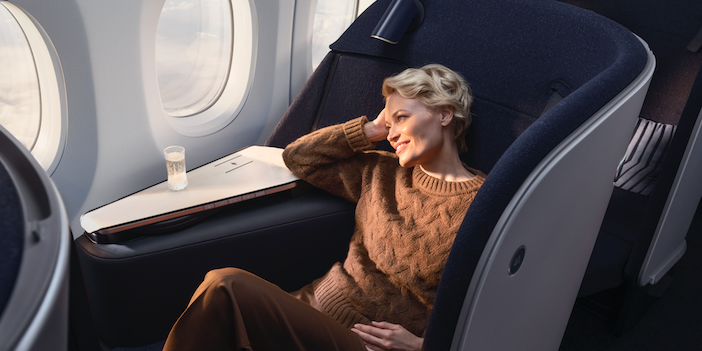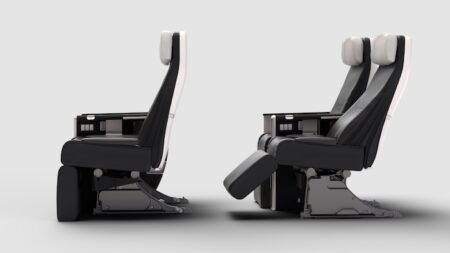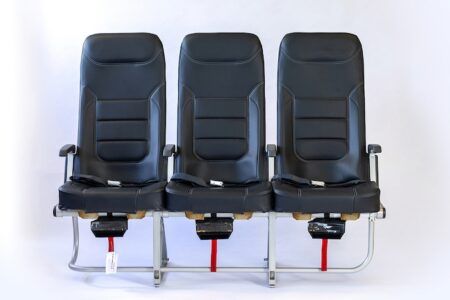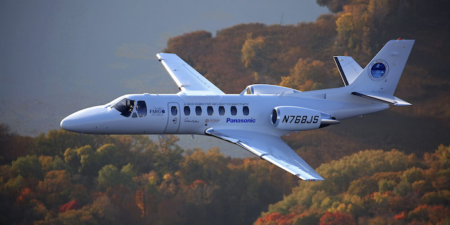The finalists in the eight categories of the Crystal Cabin Awards, the world’s foremost event honouring excellence in aircraft cabin design, have been announced, including new cabin concepts, innovative sustainable technologies, next-generation passenger comfort and pioneering safety features. A jury of 27 aviation industry experts (including editor Adam Gavine) worked through an extensive shortlist and voted for the 24 entries that have made it to the final round of voting. Here are the innovations competing in each of the eight categories…
Cabin Concepts
In the Cabin Concepts category, entries must show innovation in designing interior spaces, showing novel approaches that use the limited and valuable space in clever ways.
A great example that made the news this year is the AirLounge business class seat (pictured above), launched with Finnair. The seat, developed in a cooperation between Finnair, PriestmanGoode, Tangerine and Collins Aerospace, is distinct in the market, being more like an item of home furniture than a conventional aircraft seat. Passengers can lounge in the wide, contoured seat, which provides generous living space and freedom to relax in a variety of sitting or sleeping positions, in privacy. You can read the full details in the March issue of Aircraft Interiors international.
Another entry that received broad international interest when it made the first round of voting is Teague and Nordam’s Elevate concept for premium seating on narrowbody aircraft. The design looks stunning, enabled by some real innovation. The ‘floating’ furniture is enabled by special cabin wall brace attachments, with the passenger experience elevated by considered application of materials and contouring to build an organic, homelike space. Even better, Elevate is space-efficient, allowing the same seat count as more traditional seat designs.
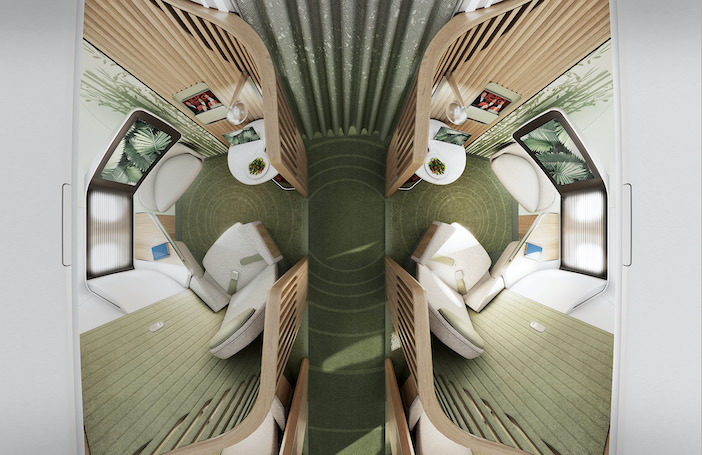
The final category contender is i4A’s Smart Space 4 Passengers, which focuses on maximising comfort in economy class. A hinge mechanism is built into the seatback so that, if the seat in front is not occupied, the seatback can be opened up to the side, for use as a legrest or stowage area. As well as creating comfort from unused space, the idea would enable airlines to charge for the option, boosting ancillary revenue.
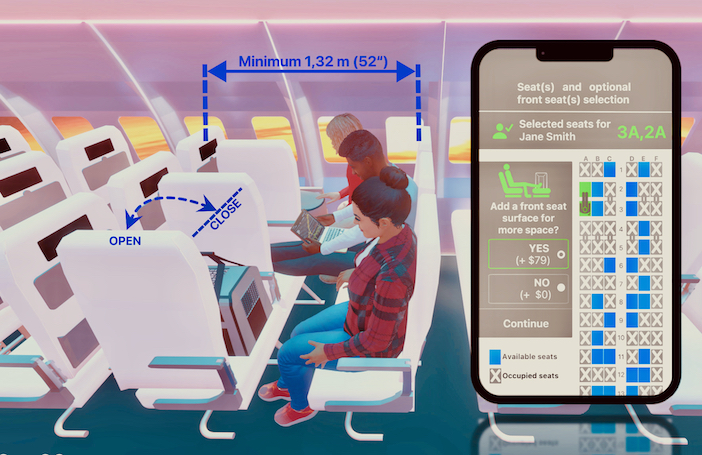
Cabin Systems
The entries in the Cabin Systems category are varied, addressing different areas such as meeting human needs, improving the integration of media displays or reducing the environmental impact of aircraft.
An interesting entry is Caeli Nova’s Cordillera emergency oxygen system, which has benefits beyond the expected. The possibility of sudden inflight cabin decompression means that aircraft must carry large reserves of fuel to comply with ETOPS standards. However, this system substantially increases the duration that aircraft can fly at high altitudes after a cabin decompression, from today’s 22 minutes, to more than 180 minutes, without any weight or maintenance penalty. Caeli Nova says this oxygen system could save the aviation industry US$500m and 1.2m tonnes of CO₂ annually by enabling more direct routes over high terrain.
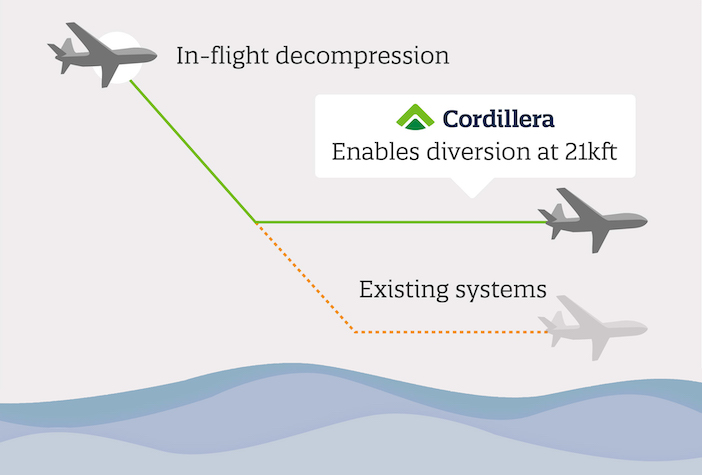
A new option for cabin designs could be opened up with the Flex OLED Kit, developed by Airbus Operations GmbH in cooperation with Recaro Aircraft Seating. The kit is a lightweight, wafer-thin HD display that can be fitted anywhere in the cabin, including in seatbacks and ceilings for video playback, ambient lighting or to direct passengers through the aircraft.

The third finalist has been developed to end the limitations on flying often experienced by passengers travelling in a powered wheelchair. A consortium comprising Flying Disabled, PriestmanGoode, SWS Certification and Sunrise Medical has collaborated to create Air 4 All, a system that allows travellers with reduced mobility to slot their own wheelchair into a seating space by folding the seat up into the backrest. These passengers can remain in their own wheelchair (often customised to their particular needs and sadly often damaged during air transit), offering wheelchair users a safe and easy way to travel without undergoing the indignities of being moved into a standard cabin seat.
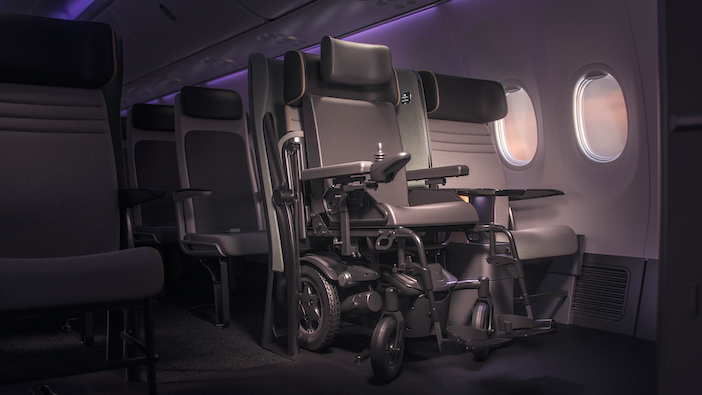
Health and Safety
While we all love inflight luxuries such as suites, showers and cinematic IFE, safety is the real heart of commercial aircraft design. One example is finalist Safran Cabin’s Fire Resistant Cargo Container, which adds an additional layer of protection against fires involving lithium batteries spreading throughout the aircraft. The container’s high-temperature resistant panels and unique door materials enable it to withstand fire for up to six hours – the maximum range an aircraft is permitted to fly from the nearest airport during flight.
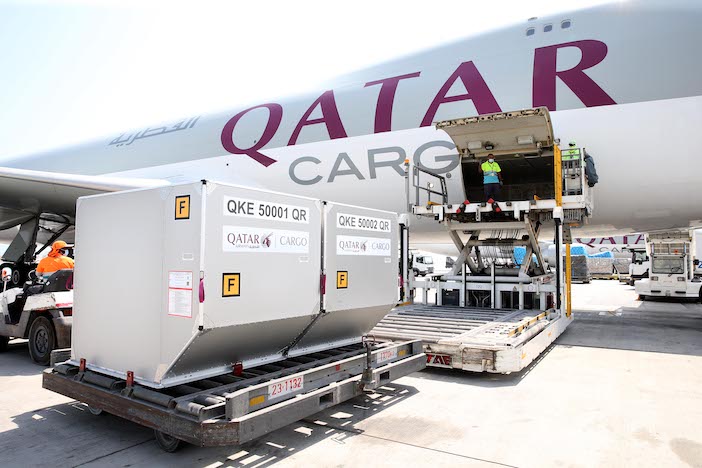
A different safety measure is AirShield, developed by Teague and Pexco Aerospace to address concerns about air-communicable pathogens in the cabin – a concern raised during the Covid-19 pandemic. AirShield clips on to existing overhead air-vents and uses the airflow to create protective ‘air barriers’ between passengers. Exhaled air is redirected downwards and out of the cabin, towards the aircraft’s filtration units.
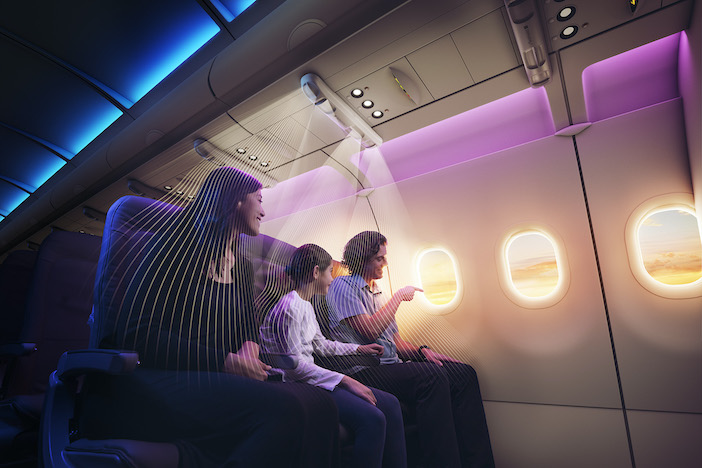
The third finalist in this category is quite different again. The Hypergamut Light by Collins Aerospace is a cabin lighting system that is attuned to human biology to help passengers feel more comfortable during and after their flight. Compatible with human circadian rhythms, the system attenuates blue light in a way that helps passengers relax – even with the lights on – and fall asleep faster on long-haul flights. Blue light is added back into the spectrum prior to arrival, helping passengers arrive at their destination without suffering feelings of jetlag. The system automatically adapts the lighting programme to adjust to the aircraft’s flightpath, time of day, and global positioning.
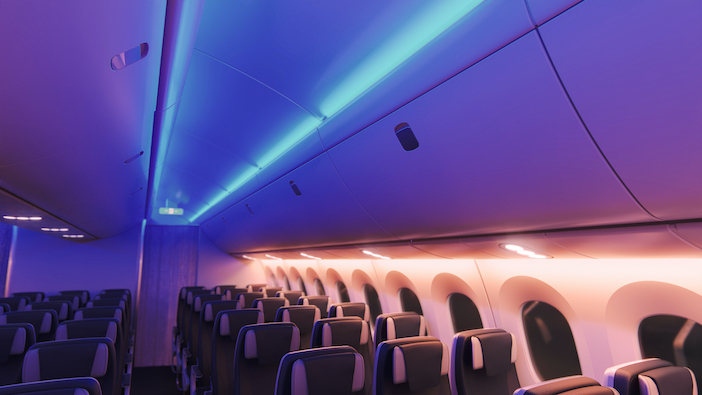
Passenger Comfort
This category brings together innovations that passengers will really feel: the in-seat experience. So what can flyers look forward to?
Premium economy seating is one of the industry’s fastest-growing sectors. ZIM Aircraft Seating is in the running with ZIMprivacy, a seat that enhances passenger comfort and privacy. The fixed seatback means that passengers behind aren’t squeezed when the seat is reclined. The mechanical recline mechanism itself is special too, enabling the seat to be moved between several different body positions. And being fully mechanical, the mechanism is easier to maintain than comparable electrically powered systems.
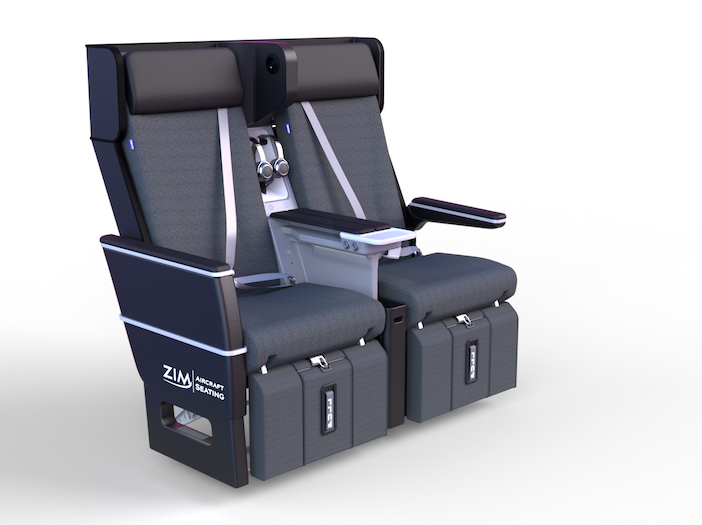
Inflight entertainment is essential on long flights, but wearing headphones can be uncomfortable when lying down. The Personalized Sound Zone (PSZ) developed by Jamco Corporation and NTT sonority solves the issue by integrating loudspeakers into the headrest. PSZ uses wave cancellation to create a spherical audio zone around the passenger’s head, with playback audible by the passenger in the sphere, but inaudible to others in the cabin. No headphones, no audio cables – just a better experience.
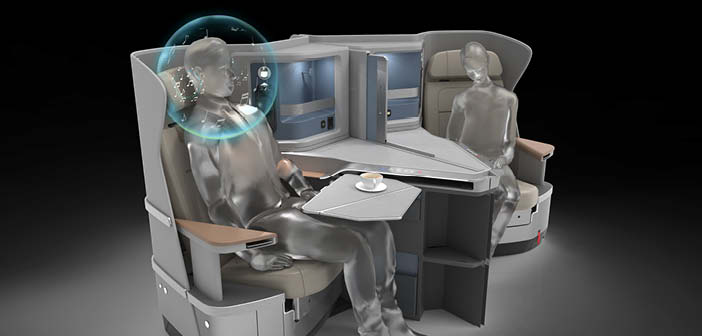
The final entry addresses the need to keep passengers hydrated and refreshed without dominating crew time. Collins Aerospace’s SpaceChiller is a personal refrigeration system that can be fitted in individual passenger seats (business rather than economy) or larger parts of the aircraft cabins (such as the galley or a snack station) in a way that was previously not possible using traditional air-cooling technologies. The system provides the luxury of cooled snacks and drinks for passengers in a compact device that Collins says requires only half the power of traditional air-cooled designs.
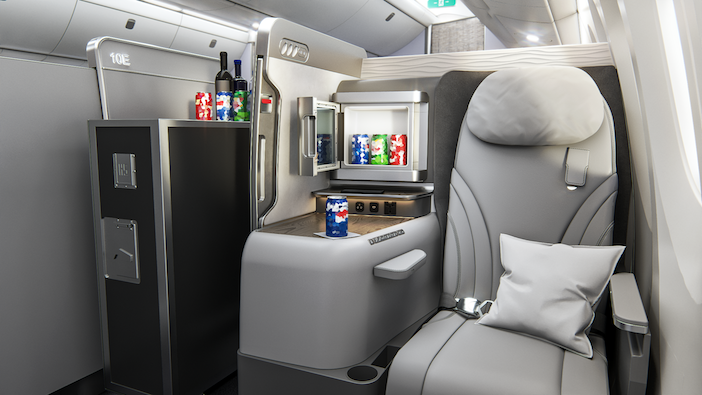
IFEC & Digital Services
Digital connectivity is dominating most of our daily lives, and while some welcome a flight as an excuse to go offline, others demand fast internet access when they travel. The latter will be interested in a new system called Dedicated Space, designed by Anuvu and Southwest Airlines, who promise a five-fold increase in available personal bandwidth and a dramatic reduction in latency. Along with faster downloads and uploads, the system is claimed to offer passengers more stable inflight connectivity.
And what of the UHD, 4K and other cutting-edge TV screens we have become accustomed to at home? The inflight experience doesn’t have to be inferior, with Thales Avionics and Harman’s Optiq display, which brings 4K video quality to aircraft. Optiq is the first QLED IFE (inflight entertainment) display, providing high-quality resolution, colour fidelity and dynamics range, while also offering low maintenance requirements for aircraft operators.
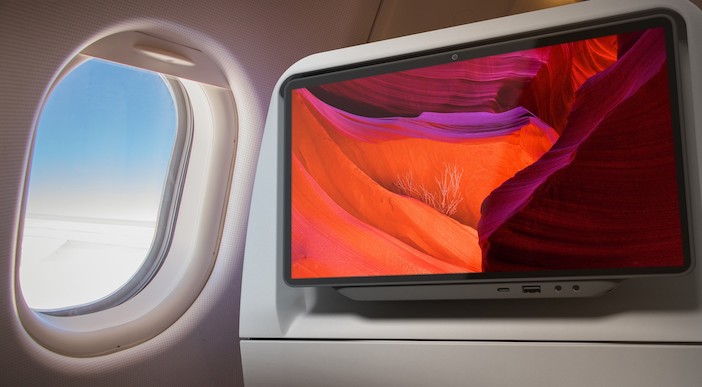
In another product designed to bring an on-ground media experience into the cabin – though for VIP jets this time – the ACJ Smart Lifi Monitor puts the customer’s device centre stage by combining an OLED display with mobile processing power. Developed by Airbus Corporate Jets and Latécoère Interconnection Systems, the system pairs with customers’ personal digital devices, which can then be used as a remote control. The Smart Lifi Monitor also offers VOD, live television, moving maps, video conferencing and more, making a wider spectrum of digital services and functions available to aircraft passengers.
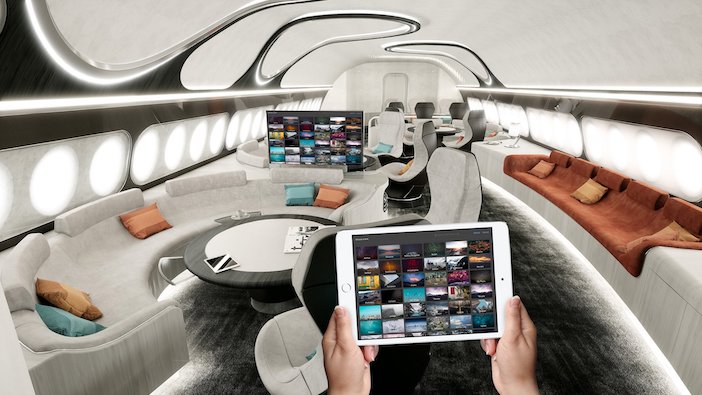
Material & Components
Many details go into maximising the appeal of the passenger environment. The topic of passenger devices arises again with Pulse from Thales Avionics, a slimline and lightweight power supply unit with dynamic power allocation that lets passengers recharge their device on-wing via USB-A, USB-C or wireless charging.
Low power anxiety is also addressed by Smart Lock Door, Diehl Aviation’s security device for crew devices such as iPads, which allows crew to use and charge these devices while stowed behind a screen in a lockable door.
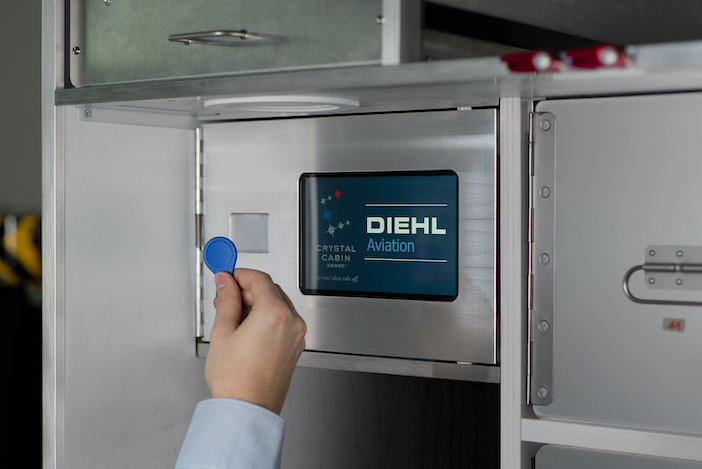
And who wants to see a tatty cabin? Lufthansa Technik’s CabinSHINE maintenance process is designed to make repairing cabin fixtures and furniture up to eight-times cheaper and nine-times faster than using conventional methods. Repair options are available for a range of cabin surface materials and imitation surfaces, and the process can also be used to repair superficial damage and blemishes on aircraft furniture during short overhaul stops.
Sustainable Cabin
Sustainability is the central issue of, well, almost everything today, but it is a particularly hot topic in aviation. The Sustainable Cabin category of the awards has become a hotbed of activity, with creative submissions that seek to reduce aviation’s ecological footprint.
For example, the recycling of cabin plastics is an attractive but difficult way to lower an ecological footprint. In cooperation with AkzoNobel, Rescoll and Roctool, Swedish manufacturer Diab has pioneered a thermoplastics manufacturing process that produces 100% recyclable panels for cabin interiors. The process is claimed to be faster than methods using adhesive films, with the thermoplastic sheets welded directly to the foam core which, incidentally, also offers improved improved acoustic insulation for the finished material.
Next up, Lantal Textiles and Olivenleder have come together to create Sustainable Genuine Leather, which uses a tanning process based on vegetable oils instead of chrome- and gasoline-based chemicals, with no detriment to haptic quality.
Materials that passengers can’t see can also have a sizeable impact on sustainability, as shown by Lufthansa Technik’s AeroFLAX prepreg. Using natural fibres and a bio-based resin system instead of glass fibre, AeroFLAX saves CO₂ not only as a by-product of weight reduction but also during the manufacturing process itself.
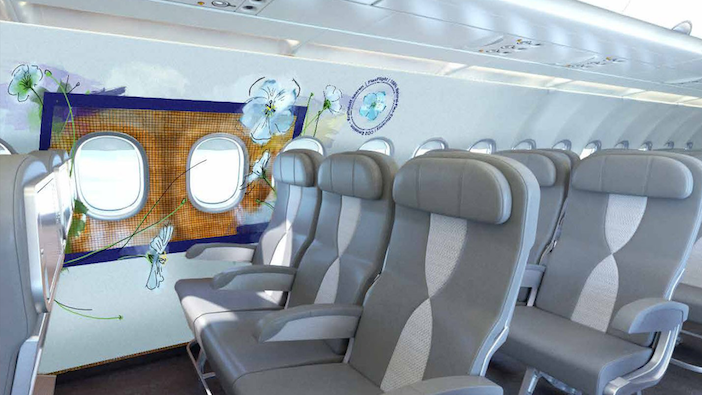
University
The University category is a playing field for imaginative concepts, with students given a ‘clean-sheet’ approach to solving aviation issues. For example, Ankit Gupta and Carlos Gatti, students at Wichita State University in the USA, has come up with a novel way of accommodating wheelchair passengers. The Fly Your Wheels Suite replaces the front-left closet on narrowbody aircraft with a multi-purpose module that can function as a safe space for a wheelchair user to sit in during a flight, in their own chair. Rather than taking away existing seating, the idea would let airlines add one paying passenger – the wheelchair user.
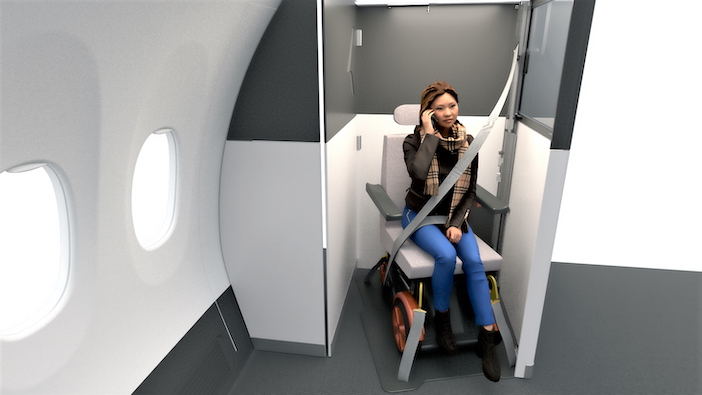
Jiayi Yu from the University of Reutlingen in Germany is competing with the Shift Cabin Interior, a study that allows operators to configure seats in multiple positions for work or relaxation, both along the axis of the seat as well as to the side. Aside from the advantage of flexibility, the concept lets airlines fit more seats into a business-class cabin.

Finally, Ken Kirtland of Georgia Institute of Technology in the USA has high hopes with Portal: a concept to create an electric short-haul airline based around an aircraft that emphasises a calmer flight experience at slower speeds, with fantastic views.
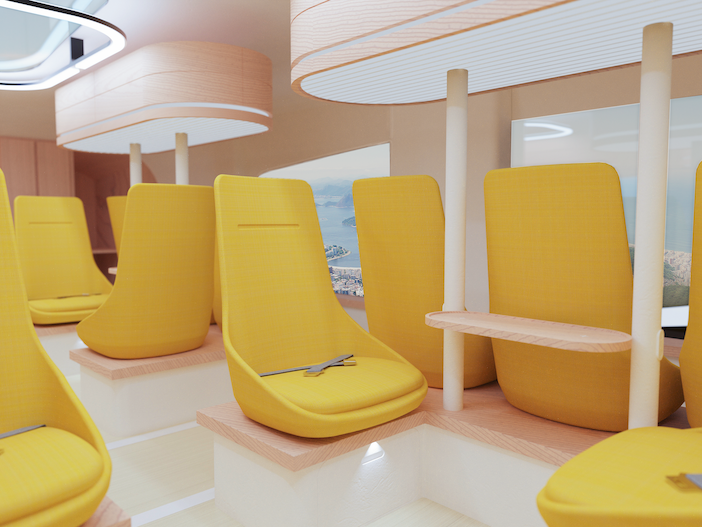
What happens next?
After moving to an online event for the past couple of years due to Covid-19 complications, the Crystal Cabin Awards are returning as an in-person event in 2022.
The 24 finalists will present their ideas in person to the 27 members of the international expert jury at an evaluation day in Hamburg, after which the eight category winners will be decided. The winners will then be announced at a prestigious Gala Dinner on 14 June during Aircraft Interiors Expo (AIX).
The winners will also present the winning concepts on 15 June at Hamburg Messe in the Cabin Space LIVE Auditorium. You can also find out more at the Crystal Cabin Award Gallery, which will be displayed at the Hamburg Pavilion at AIX, jointly presented by Hamburg Aviation (the organisers of the awards) and Hanse Aerospace, in Hall B6, Stand 6B90.
About the Crystal Cabin Award
The Crystal Cabin Award is the top international prize for innovation in the aircraft cabin. A high-calibre jury made up of renowned academics, engineers, specialist journalists and airline and aircraft manufacturer representatives comes together under the slogan ‘Let your ideas take off’ to honour extraordinary cabin concepts and products. The competition was launched by Hamburg Aviation and is organised by the Crystal Cabin Award Association. This unique honour has been presented at Aircraft Interiors Expo in Hamburg every year since 2007.



